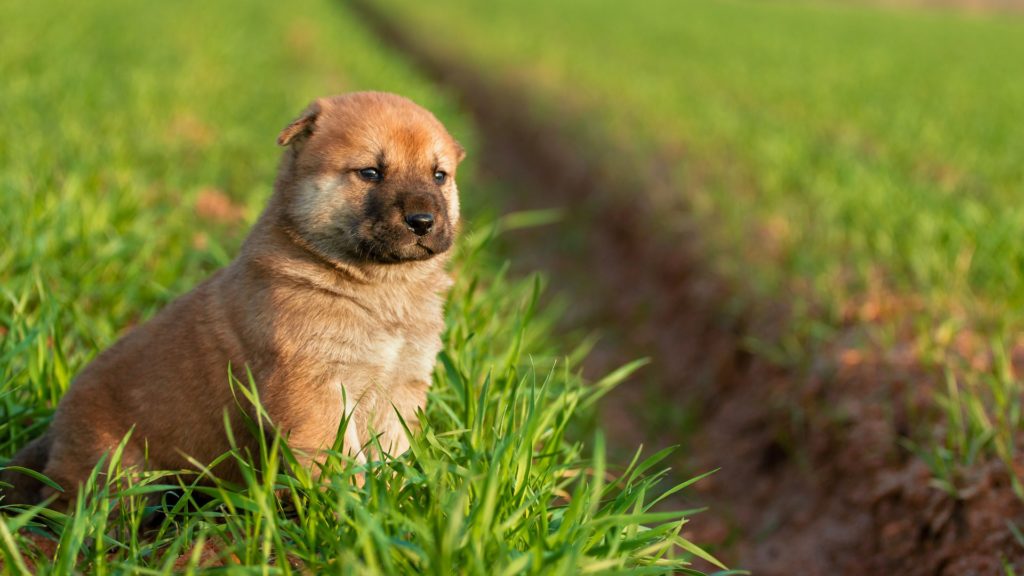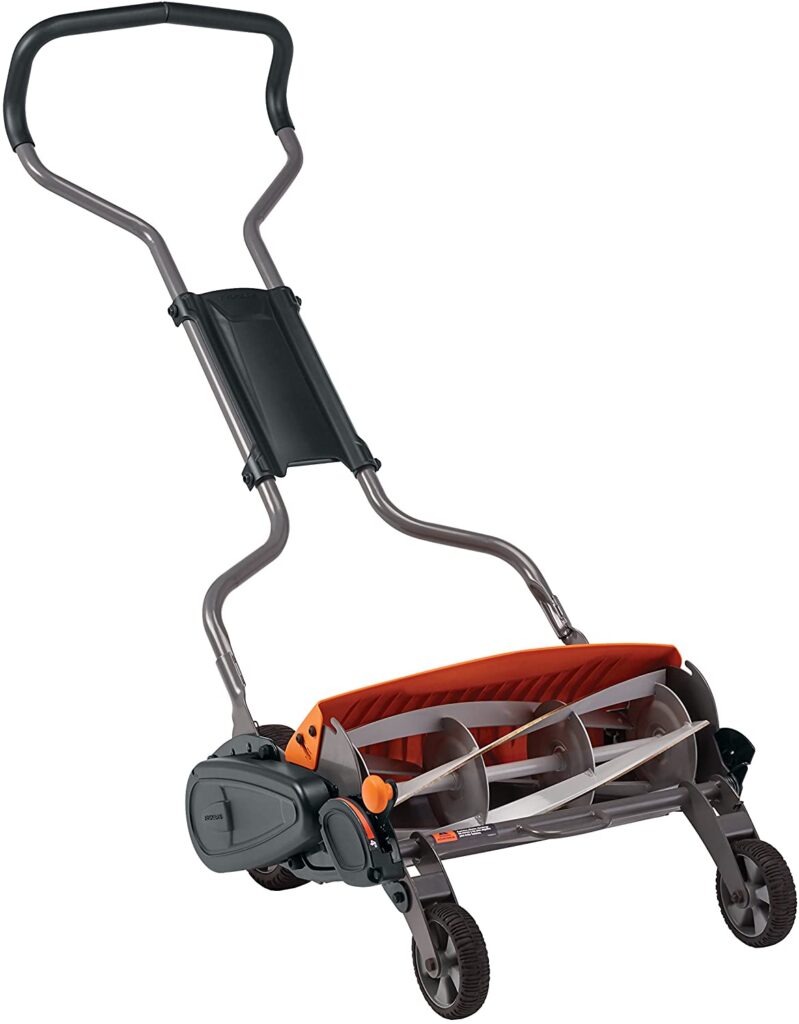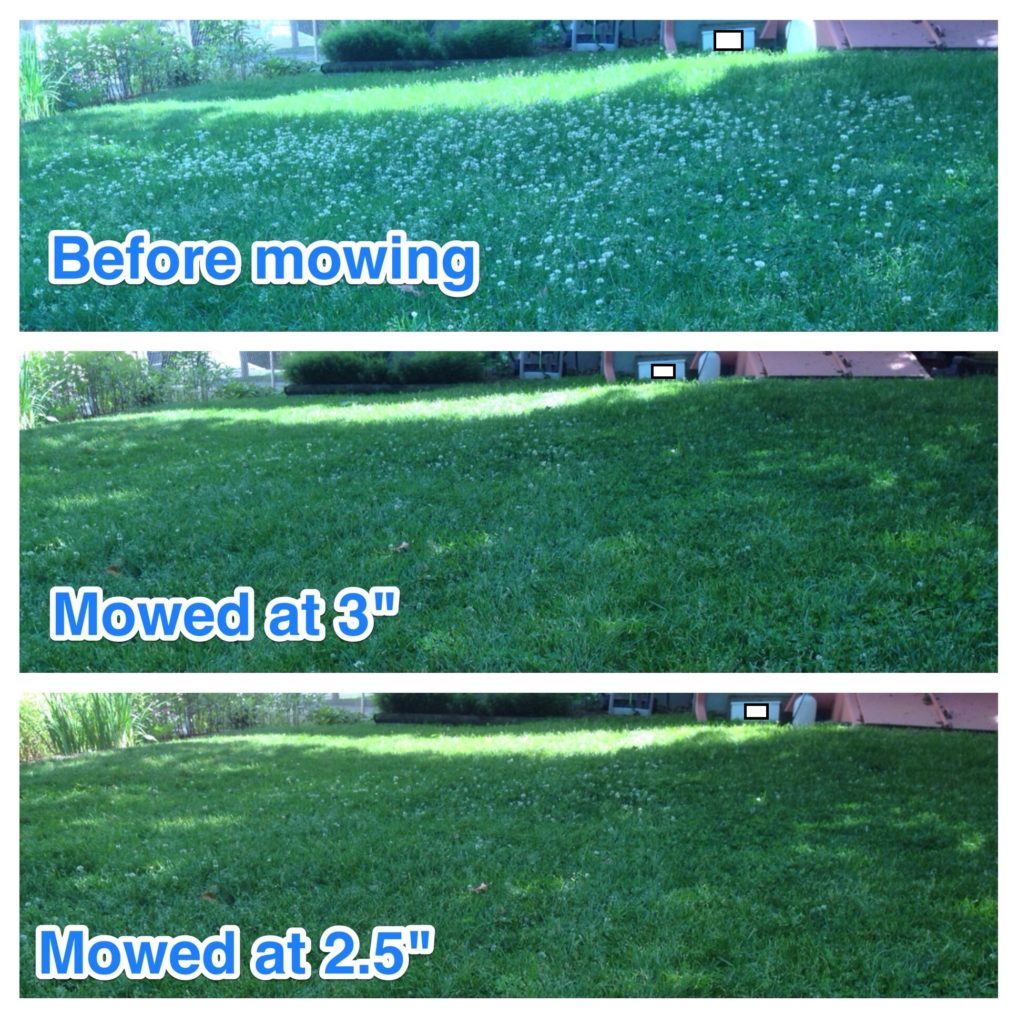So you want to have a weed free lawn that’s still safe for the kids and puppy. It is possible, but we may need to redefine our expectations of “weed free.”

Maintaining a monoculture of anything is difficult, and grass is no exception. Consider farms that are hundreds of acres of just one crop and the efforts they go to maintain it. In New England, the lawn grasses we grow are not native, which means they require care. To some people and companies that means significant care in the forms of water, soil pH adjustment (lime), nutrients (compost and fertilizer), herbicides, mowing, aeration and more.
All of this makes planting native species that require little to no care very attractive. However, most of us still want some “patch of green” to call our own for a variety of reasons. That’s doable, without too much work, but accept that weeds will appear and dealing with a few is a worthwhile trade off for Fido and the kids.
So let’s talk about growing a weed-less lawn in suburbia.
Perhaps the most important point I always try to stress is this: Do not attempt to seed an area of your lawn any larger than you are willing to water several times/day for two weeks or more. Or if you do take on more than you’ll actually tend, just know that most of the seeds will fail.
Consider growing plants indoors or a greenhouse from seed. They require frequent watering when first sown and they’re in a controlled environment. Your lawn is open to the wind and sun and seeds there can (and do) dry out quickly. If you’re not keeping them moist, they’re toast, so only sow an area you’re willing to water, or right before several days of rain.
Lime: New England soils are acidic and there is no product that will permanently change the acidity of your soil, so you need to add lime, every year, usually in the fall. This will also provide calcium to the soil which is not only a necessary nutrient for the grass but helps prevent dandelions from growing. As such, calcitic lime is great if you can find it, but the $5, 40 lb bag of dolomitic lime from any hardware store is fine.
Stop Bagging Grass!: Roots get established in soil, but without organic matter, your “soil” is basically sand and rock. Allowing grass clippings to fall to the soil, rather than bagging them, provides some organic matter, as well as important nutrients.
Allowing cut grass to fall on the lawn does NOT cause thatch – multiple studies and every major lawn company (such as Scott’s, Bayer, Jonathan Green, UMass and plenty of others) say this. Mow and blow companies take away grass clippings because customers don’t want to track grass into their homes, though they seem fine with tracking pesticides into their homes. I don’t get it, but whatever.
Compost also provides organic matter and other nutrients. Spread about 1/2” on the lawn in fall or spring. Throw shovelfuls or dump and them use the back of a rake to spread it around to the desired thickness. Grab a beer and congratulate yourself on a job well done.
Herbicides: The best way to prevent weeds, as all lawn companies, extension agents and turf experts are fond of saying, is a thick layer of grass. The only herbicide I’ve used on my lawn is corn meal gluten, which is exactly what it sounds like.
A fan of science, I want to stress that multiple studies show that corn meal gluten has only a limited effect on weed prevention, but when we’ve used it (I don’t use it every year), it seems (anecdotally) to work very well to prevent crabgrass growth. It also provides a lot of nitrogen, which is great for stimulating grass growth and green leaves. Timing is important (it should be spread before the forsythia bloom) and because it inhibits seed growth, it can also get in the way of overseeding your lawn if you plan to do that in the spring. The easiest solution to this dilemma is to use corn meal gluten in the spring and overseed in the fall. (See “Overseeding” below.)

Mowing: Mow tall and carry a large beverage. Set the mower to at least 2.5” tall, preferably 3-4”. Allowing tall grass helps shade the soil and any errant weed seeds, keeps the soil cooler so it holds moisture better, and more. As above, allow the grass (and clover) clippings to fall onto the lawn. The exception to this is if you’ve got a bunch of weeds that have gone to seed. If you can just yank the weeds by hand and toss them in the yard waste, great. If you’ve got a big patch of weeds that have gone to seed though, it’s a good idea to use a bag on the mower, if you have one, and get rid of them with the yard waste.
Overseeding: Adding more seed each year is a good investment if you’re interested in a weed-free lawn or if you just want thicker grass. Combining this with spreading compost makes great sense because you can spread compost, spread seed on top, gently use the back of a rake to work the seed in so the seed is no longer visible, and then water it or let rain do the work for you. Soil contact is important, so this method does a good job insuring contact while feeding the soil at the same time.
I like to get everything prepared before extended periods of rain are predicted so I don’t need to use tap water. Still, be prepared to water if necessary.
You’ll need to water daily, probably two or three times daily to keep the seeds moist, or you can let rain do the work for you. High temps and direct overhead sun can bake the seeds – this is part of why overseeding in spring or fall is typically best.
Seeds: Gazillions of types of grass seeds out there, some are fast-germinating annuals that grow really fast but don’t return next spring. Great for emergency situations but you’ll need to reseed later. Others are perennial, some are greener, some grow faster, some do better in drought conditions, etc. I offer these few pieces of advice:
- Make sure you’re getting seed appropriate to your light conditions. If you’ve got no trees shading your lawn, then get “full sun” or “sunny” seeds. If you’ve got a shaded area, get “shade” seeds. Getting the “Mix of sun and shade” seed mixes always seems like a great idea but you need to spread twice as much seed because only half will survive.
- Pearl’s Premium seeds are expensive but survive droughts better. Note that even drought tolerant plants need water for a few weeks to grow, just like any grass seed, but once established they’ll do well with less manual watering.
- Jonathan Green grass seeds always seem to do well in our New England climate and, I think, are some of the more attractive dark green varieties. Also expensive but you get what you pay for.
They do not make any drought tolerant seeds that I’m aware of.Their Black Beauty seeds are deep rooted and more drought tolerant.

Clover: I cannot stress the value of clover enough. It germinates rapidly (2-4 days, in my experience), germinates in cooler temperatures (think early spring), stays green in drought, provides shade to help cool the soil and retain moisture, provides food for rabbits so they stay (mostly) out of the vegetable garden, “fixes” nitrogen (pulls nitrogen from air and put it into soil, similar to legumes), and more. Lawn mixes used to include clover seed but modern broadleaf herbicides kill clover, so there was no point including the seeds in lawn mixes any more. When spreading, just try to make sure you’re not making clusters or stripes of clover – not an aesthetic tragedy but it can look funny.
Many people seem to freak out over the possibility that bees might be on the lawn feeding on clover. If you mow, you’re probably not going to have many flowers, or not for long. I actually use the flowers as a guide – if I see flowers then it is time to mow.
You can buy clover on line or locally at Wilson’s Farm, in the glass greenhouse, just make sure you are buying “Dutch White Clover.” This is the low-growing variety for lawns. You do NOT want the tall red clumping variety (often seen around horse farms), the mid-sized yellow variety or any other. Dutch White Clover or go home. More on clover here.
Fertilizer: Last year, for the first time, I added fertilizer. In retrospect, I don’t know why, but I did. Between the compost, the corn gluten meal, the nitrogen-fixing clover and allowing the clippings to fall to the lawn, it is probably enough nutrients for the lawn. However, I haven’t used corn gluten meal for years, we’re all over our lawn every day, and for each of the last six summers we’ve had bouncy houses that weigh hundreds of pounds, with hundreds of pounds of children and adults, smooshing the same spot for days on end. Did I need fertilizer? No, probably not. Was it worth $20 as an insurance plan? Yes, I think so, and I’ve got more than half the bag remaining for future years.
Other: Eventually, perhaps immediately before seeding, you probably want to aerate the lawn. After getting compacted by people walking all over it all year, the pores in the soil can get closed/crushed so air and water cannot easily penetrate.
You can rent a 300 lb gas-powered beast or, if you have a limited sized lawn then you can use an inexpensive manual core aerator. (Like others, I found that cutting the cores a bit shorter dramatically improved efficiency.)
The spikey cleat strap-on things you can buy for $5 are NOT core aerators. They’re spikes that just push the soil around (think of driving a nail into wood – you’re compressing the wood around the nail). Core aerators actually pull a small core of soil to the surface, removing material, to facilitate air and water penetration. Afterward it looks like a herd of geese pooped all over your lawn for a few days until they disintegrate.
I actually thought I’d posted this months ago and didn’t realize until I posted about dethatching yesterday that it wasn’t public. Sorry about that!

